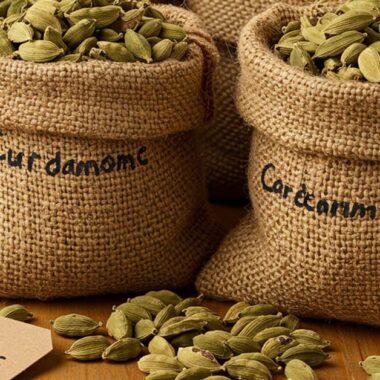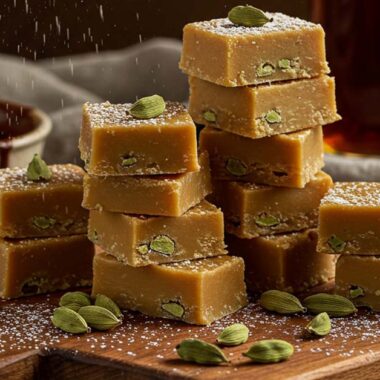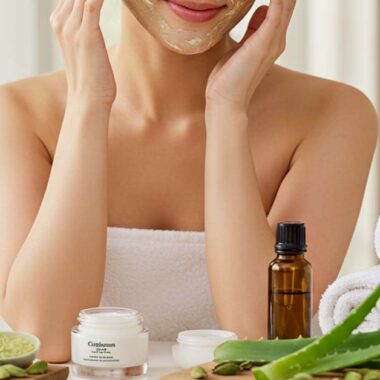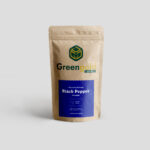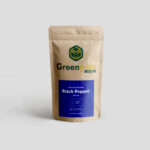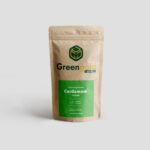Acupuncture, a key component of Traditional Chinese Medicine (TCM), has been practiced for thousands of years to restore energy balance (Qi) and promote healing. While acupuncture primarily involves the use of fine needles to stimulate meridian points, it is often combined with herbal remedies like cardamom to enhance its therapeutic effects.
In TCM and holistic healing practices, cardamom is used as a warming, digestive, and detoxifying herb, often paired with acupuncture to improve digestive health, respiratory function, and energy flow.
Let’s explore how cardamom enhances acupuncture treatments and how it can be integrated into holistic wellness therapies.
🌟 Cardamom’s Role in Traditional Chinese Medicine (TCM)
In TCM, cardamom (known as Bai Dou Kou – 白豆蔻 or Sha Ren – 砂仁, depending on the variety) is classified as a warming herb that:
✔ Regulates Qi (energy flow) and removes stagnation
✔ Strengthens digestion and relieves bloating
✔ Expels dampness from the body
✔ Supports lung and respiratory health
✔ Enhances circulation and detoxification
✨ Elemental Association: Cardamom is linked to the Earth Element, which governs digestion and metabolism in TCM.
🔥 Paired Meridians: Stomach, Spleen, and Lungs
🔹 1. Cardamom & Acupuncture for Digestive Health 🦠
Acupuncture is commonly used to improve digestion by stimulating meridian points that regulate the Stomach and Spleen Qi. Cardamom is often included in herbal prescriptions to:
✅ Reduce bloating & gas
✅ Improve nutrient absorption
✅ Relieve nausea & acid reflux
✅ Strengthen weak digestion (Spleen Qi Deficiency)
✨ Common Acupuncture Points Used:
- ST36 (Zusanli): Strengthens digestion & relieves bloating
- SP9 (Yinlingquan): Clears dampness & improves metabolism
- CV12 (Zhongwan): Regulates the stomach
🔥 How Cardamom is Used:
✔ Drinking cardamom tea before an acupuncture session can enhance digestive benefits.
✔ Cardamom essential oil can be massaged onto acupuncture points for added relief.
💨 2. Cardamom & Acupuncture for Respiratory Health 🌬
In TCM, cardamom is used to clear phlegm and strengthen the lungs, making it an excellent companion for acupuncture treatments that focus on respiratory health.
✅ Clears mucus & congestion
✅ Supports lung function & eases asthma
✅ Improves breathing & oxygen flow
✅ Warms the body & fights colds
✨ Common Acupuncture Points Used:
- LU7 (Lieque): Opens the lungs & clears phlegm
- CV17 (Shanzhong): Strengthens lung Qi & eases breathing
- LI4 (Hegu): Clears colds & improves immunity
🔥 How Cardamom is Used:
✔ Cardamom inhalation therapy (steam or essential oil) is often used before acupuncture for better lung function.
✔ Drinking cardamom and ginger tea after acupuncture enhances detoxification.
⚡ 3. Cardamom & Acupuncture for Energy & Fatigue 🧘♂️
Many people seek acupuncture to boost energy levels and fight chronic fatigue. Cardamom is an excellent natural Qi booster that supports the body’s energy systems.
✅ Enhances mental clarity & focus
✅ Reduces stress & nervous exhaustion
✅ Boosts circulation & revitalizes the body
✨ Common Acupuncture Points Used:
- DU20 (Baihui): Increases energy & sharpens focus
- CV6 (Qihai): Strengthens overall vitality
- KD1 (Yongquan): Grounds energy & relieves fatigue
🔥 How Cardamom is Used:
✔ Drinking cardamom-infused green tea before acupuncture helps stimulate energy flow.
✔ A cardamom oil foot massage after acupuncture helps recharge the body.
🌙 4. Cardamom & Acupuncture for Sleep & Relaxation 😴
Acupuncture is often used to improve sleep patterns and relieve insomnia. Cardamom complements these treatments by calming the nervous system and reducing stress.
✅ Relaxes the mind & reduces anxiety
✅ Balances hormones affecting sleep
✅ Relieves tension & promotes deep rest
✨ Common Acupuncture Points Used:
- HT7 (Shenmen): Calms the mind & reduces anxiety
- SP6 (Sanyinjiao): Balances hormones & improves sleep
- LV3 (Taichong): Releases tension & promotes relaxation
🔥 How Cardamom is Used:
✔ A warm cup of cardamom and chamomile tea after acupuncture enhances deep sleep.
✔ Cardamom aromatherapy (essential oil diffused in a bedroom) promotes relaxation.
🌿 5. Cardamom & Acupuncture for Detoxification 🩺
Acupuncture is widely used to detoxify the liver, kidneys, and blood. Cardamom is a powerful diuretic and detox herb that supports this process.
✅ Flushes toxins & purifies the blood
✅ Supports liver & kidney function
✅ Prevents water retention & bloating
✨ Common Acupuncture Points Used:
- LV3 (Taichong): Detoxifies the liver & clears stagnation
- KI3 (Taixi): Strengthens kidney function
- ST25 (Tianshu): Regulates digestion & detox processes
🔥 How Cardamom is Used:
✔ Drinking cardamom detox water before acupuncture helps stimulate the cleansing process.
✔ Cardamom can be mixed with coriander and fennel for a more powerful detox effect.
🛀 6. Cardamom & Acupressure Therapy for Stress Relief 💆♀️
If you don’t have access to acupuncture, you can still use acupressure therapy at home with cardamom-infused oils to:
✔ Relieve headaches & tension
✔ Calm the nervous system
✔ Boost circulation & relaxation
✨ How to Do It:
🔹 Apply cardamom essential oil to acupressure points like HT7 (Shenmen) and LV3 (Taichong)
🔹 Gently massage in circular motions for 1-2 minutes per point
🔹 Breathe deeply & relax 🌬
🌟 Final Thoughts: A Perfect Harmony of Acupuncture & Cardamom
Cardamom enhances the effects of acupuncture by supporting digestion, detoxification, energy flow, and relaxation. Whether used as a tea, essential oil, or dietary supplement, it complements meridian-based healing for overall health and well-being.
🌱 Ready to experience the benefits? Get high-quality cardamom for holistic healing from Greengold Guide 🌿✨

